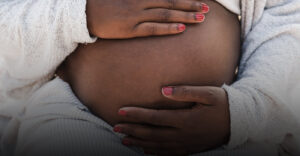Hispanic and Black males are most affected
A new study by Northwestern University found that among youth who had entered juvenile detention, one-quarter of Black and Hispanic males were later injured or killed by firearms within 16 years.
While the nation’s youth and young adults are disproportionately affected by the daily occurrence of 100 firearm deaths and 234 non-fatal firearm injuries, youth who have been previously involved with the juvenile justice system had up to 23 times the rate of firearm mortality than the general population.
The study is the first to focus on the incidence rate of firearm injuries and death within the juvenile justice population.
“Who goes to detention? Most are just kids from poor families. Many of our participants had not even been convicted,” said Linda Teplin, a behavioral scientist and the study’s director. “Youth in the juvenile justice system are commonly viewed as perpetrators of violence – but we found that they are highly likely to become victims of firearm injury and death.”
Teplin is the Owen L. Coon Professor of Psychiatry and Behavioral Sciences at Northwestern University Feinberg School of Medicine and the senior author of the study.
“We need empirical studies to inform policy and guide decisions around the most promising and innovative interventions,” said first author Nanzi Zheng, a Northwestern doctoral student in psychology. “To address our nation’s epidemic of firearm injury and death, we also need to focus on the highest-risk youth, like those in the juvenile justice system.”
“Nonfatal Firearm Injury and Firearm Mortality in High-Risk Youths and Young Adults 25 Years After Detention” was published by the journal JAMA Network Open today (April 21). The paper can be accessed here.
Injury and mortality rates
Using data from the Northwestern Juvenile Project, a longitudinal investigation of 1,829 randomly selected youth who were newly admitted to juvenile detention in Cook County (Chicago), the researchers found one-quarter of Black and Hispanic males in the study were later injured or killed by firearms within 16 years of detention. They also found that the rate of firearm injury and death among juvenile justice males was nearly 14 times the rate among juvenile justice females.
Firearm mortality rates for most demographic groups in the study were significantly higher than the general population.
Firearm deaths among females in the study were 6.5 times higher than the general population.
Among males, non-Hispanic white males were 23 times more likely to be killed by firearms than those in the general population. The firearm mortality rate among Hispanic males was nearly 10 times higher than the general population.
Firearm death among Black males was 2.5 times higher than the general population. While significantly high, the number represents a less dramatic difference than other demographic groups because firearm mortality is already so high among Black males in the general population.
Study implications
Teplin advises a creative and multidisciplinary approach to reducing firearm violence that involves legal and healthcare professionals, street outreach workers and public health researchers.
“People who have been shot are more likely to be injured again or killed. Therefore, hospital emergency departments are ideal settings to implement violence prevention interventions. Poverty also begets violence. We need to address the compound issues that lead to urban blight, such as inadequate housing, unemployment and poor infrastructure,” Teplin said.
“The public cares a great deal about mass shootings, but they comprise less than 4% of all firearm deaths. We need to worry more about the everyday violence that disproportionately affects poor, urban youth, especially people of color.”
Department of Justice viewpoints
“These findings are sobering and underscore the need for further research to better understand the relationship between juvenile detention and firearm victimization,” said Nancy La Vigne, director of the National Institute of Justice. “Given this study’s racially disparate impacts, it is essential that we examine both the individual factors precipitating violent victimization and the larger context of structural inequality.”
“As this study makes clear, vulnerability to gun violence is one of many adverse outcomes associated with juvenile detention,” said Liz Ryan, administrator of the Office of Juvenile Justice and Delinquency Prevention. “These findings demonstrate the comprehensive support that formerly detained youth need and highlights the need for additional research. We must continue to work together to better understand — and mitigate — the challenges faced after juvenile justice system involvement.”
Research support
Major funding for the Northwestern Juvenile Project was provided by the U.S. Department of Justice: National Institute of Justice and Office of Juvenile Justice and Delinquency Prevention; the National Institutes of Health; and the Centers for Disease Control and Prevention.






